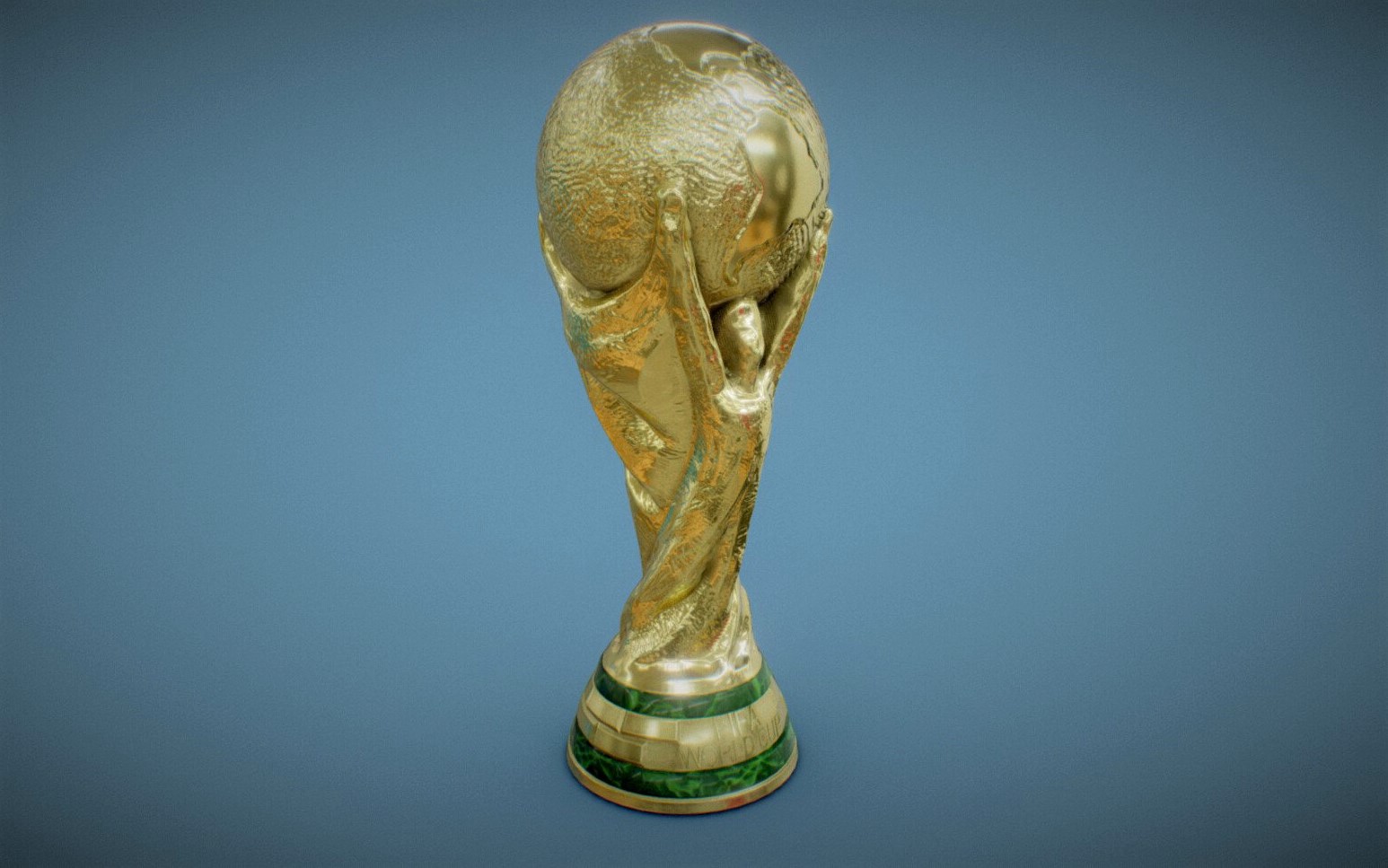All serious players dream about the day they can lift the world cup trophy above their heads as champions. But what they don't know, is the interesting history that this important symbol of success has to tell. From its conception to its dark history, here are some secret facts FIFA world cup trophy 2022.
FIFA Worldcup Trophy 2022
The Jules Rimet Trophy
The trophy we know and love today isn't the original design of the world cup trophy. The original trophy was used from 1930 to 1970 and was named Victory as it depicted Nike, the Greek goddess of victory based on the incomplete Nike of Samothrace sculpture, which remains on display at the Louvre. It was later renamed in 1946 to the Jules Rimet Trophy in honor of the third and longest-serving FIFA president, Jules Rimet, who passed a vote to initiate the competition It was designed by a French sculptor named Abel Lafleur and was made of gold-plated sterling silver and lapis lazuli at the base, which is a semi-precious stone. As stipulated by Jules Rimet when the tournament has conceived the country that won the cup 3 times would get to keep it. This occurred when Brazil won for the third time in 1970, prompting the commissioning of a replacement, the current one in use today.
See Also
FIFA World Cup 2022 Stadiums Venues in Qatar
The FIFA World CupTrophy
This is the trophy used today, called the FIFA World Cup
Trophy. Introduced in 1974 it stands at 36.8 Cm's high and weighs 6.1 Kg's. Made
of 18 carat gold with a malachite base it depicts two human figures holding up
the Earth, as if to represent fair competition. It was designed by Italian
artist Silvio Gazzaniga after FIFA received 53 submissions from sculptors in
seven countries.
A Mysterious Past
Believe it or not, despite the trophy being such an
important item, it's had a rough history. On the 20th of March, 1966, four
months before the 1966 FIFA World Cup in England, the original Jules Rimet
trophy was stolen during a public exhibition. Seven days later, pickles the dog
saved the day by finding it wrapped in newspaper at the bottom of a suburban
garden hedge in south London Finding the missing trophy not only won Pickles national
fame but year's supply of premium dog
food and appearances in several films at twice the normal pay rate for dogs. To
prevent such an embarrassment from happening again, as a security measure, The
Football Association
secretly manufactured a replica of the trophy for use in exhibitions rather than the original. However, FIFA never gave permission for the FA to create a replica, so it had to disappear from public view. But nobody was quite sure which trophy was the real one, so it was eventually purchased by FIFA at an auction in 1997 for 254,500 pounds ten times the reserve fifa world cup 2022 trophy price. Subsequent testing by FIFA, however, confirmed the auctioned trophy was indeed a replica and it now resides at the English National Football Museum
The Original Trophy's Fate
When the Brazilian team won the tournament for the third
time in 1970, they put it on display at the Brazilian Football Confederation
headquarters in Rio de Janeiro in a cabinet that was made of bullet-proof glass. However, it seems the English
aren't the only ones who had trouble keeping it safe. On the 19th of December
1983 some thieves thought, the glass may be bulletproof, but what about the
wooden cabinet? So, they pried it open with a crowbar and stole the cup for the
last time. The trophy has never been recovered and it is widely believed to
have been melted down and sold.
A tradition is born
Have you ever wondered why the trophy is held up high when it has been won? Yes, it's partly because they're ecstatic about winning it, but this tradition was born for a more practical reason. Back in 1958, the Jules Rimet Trophy was held up by Brazilian captain Hilderaldo Bellini after he heard photographers' requests for a better view of the trophy That's why every Cup-winning captain ever since has repeated the gesture, to help photographers get that perfect shot.
Engravings
Most prestigious awards are engraved after each historic milestone, and the world cup trophies are no different. On the four sides of the Jules Rimet Trophy base, there were four gold plates, onto which would be written the names of the winners of the trophy. After the 1994 FIFA World Cup a plate was added to the bottom side of the trophy on which the names of winning countries are engraved.
You Can't Keep it
Unlike its predecessor, the current trophy cannot be won
outright. Instead, the winners of the tournament receive a bronze replica which
is gold-plated rather than solid gold.
It's probably hollow
Chemistry professor Martyn Poliakoff, of Nottingham
University, calculated that a solid gold World Cup trophy would weigh around 70
to 80 kilograms. That's about the same as a heavy adult, making it too heavy
for footballers to lift over their heads. Therefore it must be hollow.

Comments
Post a Comment